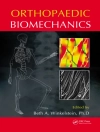Now in its fully revised and expanded second edition, this volume is the definitive resource on long-distance air transport of injured patients in both peacetime and wartime. It discusses the history of aeromedical evacuation, triage and staging of the injured patient, evacuation from site of injury to medical facility, air-frame capabilities, medical capabilities in- flight, response to in-flight emergencies, and mass emergency evacuation. Specific medical conditions are addressed in detail in the second half of the book, including general surgical casualties such as abdominal wounds and soft tissue injuries, vascular injuries, maxillofacial injuries, head and spinal cord injuries, ophthalmologic casualties, orthopedic casualties, burns, pediatric casualties, obstetric-gynecologic casualties, and more. For each medical condition, important topics are addressed such as conditions needed to be met before transportation, special concerns, supplies and needs of the specific patients and possible in-flight emergencies and their appropriated treatment.
Containing several new chapters and featuring extensively updated contributions from experts in the field, Aeromedical Evacuation: Management of the Acute and Stabilized Patient, Second Edition is a must-have reference for a whole new generation of military flight surgeons and flight nurses responsible for aeromedical evacuation of casualties as well as civilian physicians and nurses involved in air transport of ill and post-operative patients.
Inhoudsopgave
Introduction.- Aeromedical Evacuation: A Historical Perspective.- Military Casualty Evacuation: MEDEVAC.- Civilian Air Medical Transport.- Aircraft Considerations for Aeromedical Evacuation.- Preparation for Long-Distance Aeromedical Evacuation.- Aeromedical Patient Staging.- Military Aeromedical Evacuation Nursing.- Critical-Care Air Transport: Patient Flight Physiology and Organizational Considerations.- Aeromedical Evacuation of Patients with Abdominal, Genitourinary, and Soft Tissue Injuries.- Orthopedic Patients.- Aeromedical Evacuation of the Neurosurgical Patient.- Otorhinolaryngology Head and Neck Surgery Patients.- Care of Ophthalmic Casualties.- Peripheral Vascular Casualties.- Aeromedical Evacuation of Cardiothoracic Casualties.- Burn Casualties.- Patients Requiring Mechanical Ventilation.- Medical Casualties.- Aeromedical Evacuation of Patients with Contagious Infections.- Aeromedical Evacuation of Obstetric and Gynecological Patients.- Overview of Pediatric and Neonatal Transport.- Aeromedical Evacuation of Psychiatric Casualties.
Over de auteur
William W. Hurd, MD, MPH, FACOG, FACS
Col, USAF, MC, SFS (ret.)
Chief Medical Officer
American Society for Reproductive Medicine
Professor Emeritus
Department of Obstetrics and Gynecology
Duke University Medical Center
Durham, North Carolina, USA
William Beninati, MD, FCCM Col, USAF, MC, FS (ret.)
Senior Medical Director, Intermountain Life Flight and Virtual Hospital
University of Utah School of Medicine
Salt Lake City, Utah, USA












